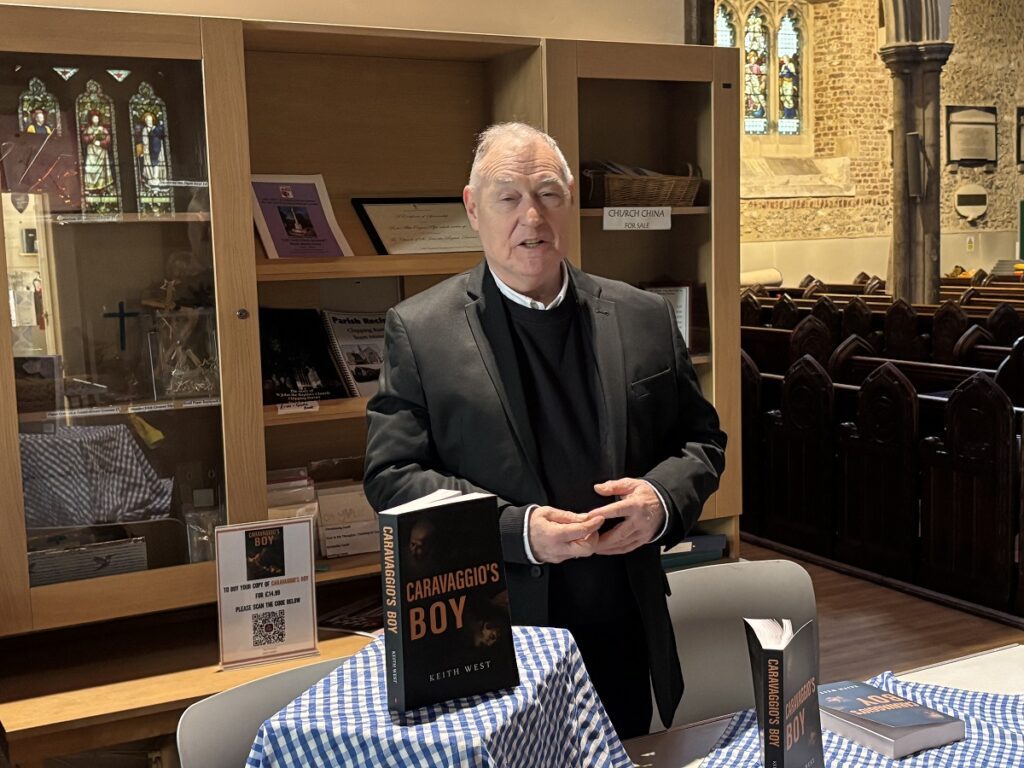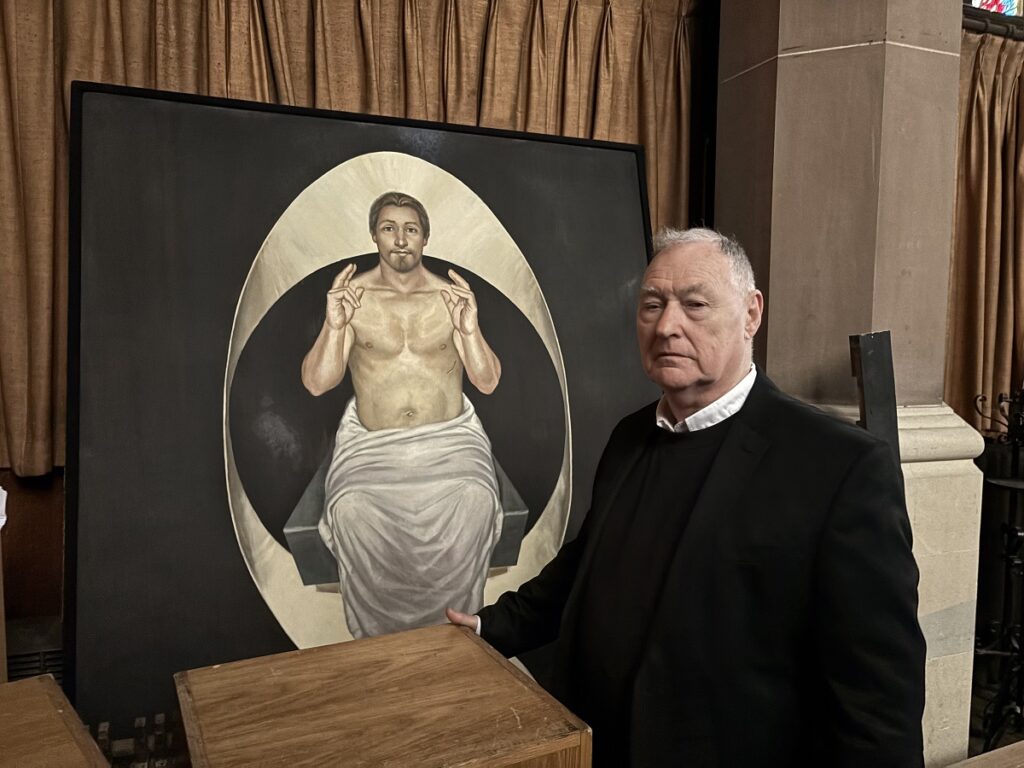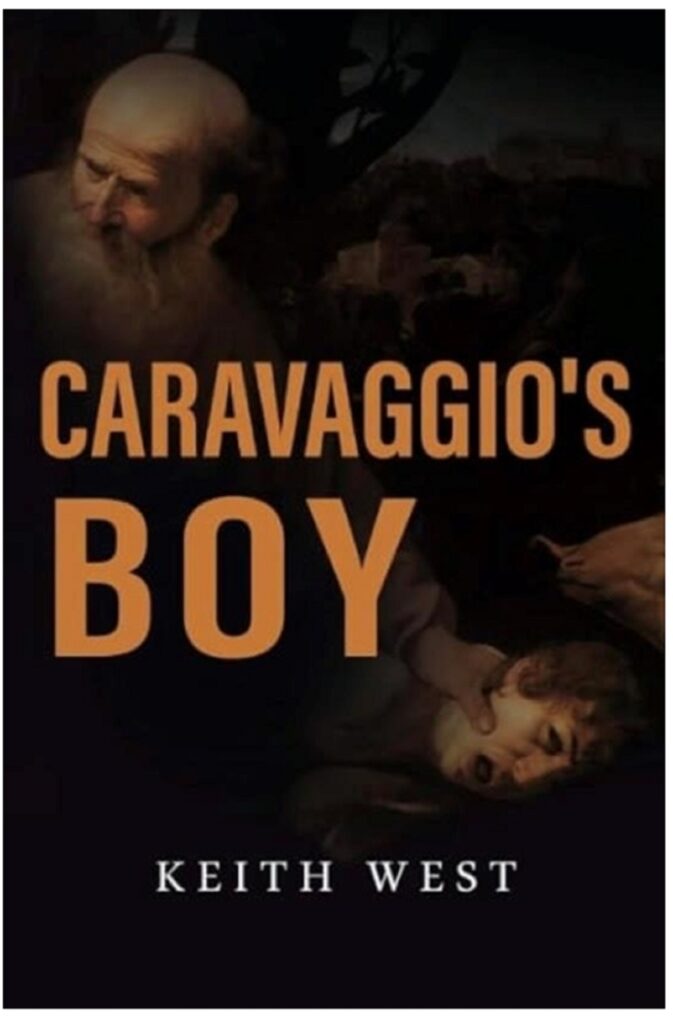Barnet parish church hosts launch of historical novel by painter and art lecturer with a lifetime’s interest in paintings by Caravaggio

A lifetime’s fascination with the work of the prominent early Baroque painter Caravaggio has led to an unexpected twist in the career of High Barnet painter and art lecturer Keith West.
Because of his frustration at the failure of art historians to provide answers to unresolved questions about Caravaggio’s troubled life, West has written an historical novel – Caravaggio’s Boy – in which he explores the meteoric rise and fall from grace of the greatest Italian painter of his generation.
West is well known locally for his own religious paintings which over the years have been displayed at Barnet Parish Church, St Alban’s Cathedral, St Martin-in-the Fields, St Margaret’s Church, Westminster, and other settings and galleries.
His oil painting depicting the 1471 Battle of Barnet was unveiled at the Barnet Museum shop in 2019 during the 30th anniversary celebrations for The Spires shopping centre.
Holding the High Barnet launch of Caravaggio’s Boy at the parish church was an added honour because West’s painting Majestas Domini (Christ in Glory) is about to rehung in the parish church’s Ravenscroft side chapel which will also display his next painting, a newly commissioned Madonna and Child.
West (77), a long-time High Barnet resident, was formerly a lecturer and head of arts at the Camden Institute.
He came up with the idea of writing an historical novel about Caravaggio during the Covid lockdown, after his retirement from teaching.
“Since a teenager, I have always been fascinated with work of Michelangelo Merial de Caravaggio and his model Cecco de Caravaggio.
“I had acquired so much material during my research and preparation for lectures, that I realised I should have a go myself at answering some of the unresolved questions about his life.
“In the many books about Caravaggio, art historians offer their individual take on the who, when, where and what about Caravaggio, but they don’t answer the why, and they fail to explain why he became such a violent, touchy and provocative man.
“I realised I should not try to write another biography but attempt to fill in some of the gaps in Caravaggio’s life story and the background to the incidents that sent him into exile.
“By choosing the form of a novel I had the opportunity to speculate about the background to his paintings and the role of his favourite model, Francesco Boneri, who was known as Cecco.”
In recommending the book, the Very Reverend Jeffrey John, formerly Dean of St Alban’s Cathedral, said West had “imaginatively and convincingly” filled in some of the gaps in knowledge of Caravaggio’s life and that of Francesco, his model, student and lover.
“It is a rollicking story which vividly brings to life the violent contrasts of their time: the opulence and squalor, piety and corruption, sophistication and degradation of 16th and early 17th century Italy.
“Against this backdrop West’s expertise in art and art history gives fascinating insights into the genesis and genius of Caravaggio’s paintings.”

West’s painting Majestas Domini — which is waiting to be rehung in the Ravenscroft chapel at the parish church – is his reconfiguration of the famous Graham Sutherland tapestry, Christ in Glory, which is on display at Coventry Cathedral.
His commission for the painting came from the Rector of St Margaret’s Church, Westminster, where it was on show as part of the Festival of Christ the King in 2012. Later it was displayed at St Alban’s Cathedral and then gifted to Barnet parish church.
An earlier series of eight paintings by West, The Story of the Passion, was first shown at St Alban’s Cathedral in 2008, then St James’s Church, Picadilly and St Margaret’s, Westminster.
He is now working on a new small oil painting of Madonna and Child which has been commissioned for St John’s by the team vicar Father Sam Rossiter-Peters, and which will be hung in the Ravenscroft chapel together with his other painting, Majestas Domini (Christ in Glory).
“Father Sam wants the Madonna and Child to be culturally correct. I have just done the drawing. The baby’s arms are up which would be an anticipation of the crucifixion, and which would marry my Christ in Glory painting.”
West’s lifetime fascination with religious paintings began at the age of 16 on a school trip to the National Gallery when he first saw Caravaggio’s The Supper at Emmaus and realised it was different from every other painting in the gallery.
“When I became an art student, I went all over Italy to see every Caravaggio I could find, as well as to Dublin and New York. I think I have seen everyone.
“There are quite a few gaps in Caravaggio’s life story with all the tensions his immense talents and unique vision caused him throughout his career.
“From envious competitors who resented his popularity and cardinals who recognised his genius but objected to casting the poor as saints and a prostitute as the Virgin Mary.
“Art historians can’t speculate about these gaps and incidents, but a novelist can.”
Cecco, Caravaggio’s model, was the only companion of his Roman years to accompany the master into exile after the duel in which Caravaggio’s opponent, Ranuccio Tomassoni was killed.
It was after he was abandoned in Naples when Caravaggio left for Malta, that Cecco appears to have begun painting commissions.
West’s novel brings Cecco to life in an imagined career pulled together from scraps of information and a catalogue of paintings which indicated he was a talented painter.

Caravaggio’s Boy, published by Vanguard Press, £14.99, available from Waterstones and Amazon

